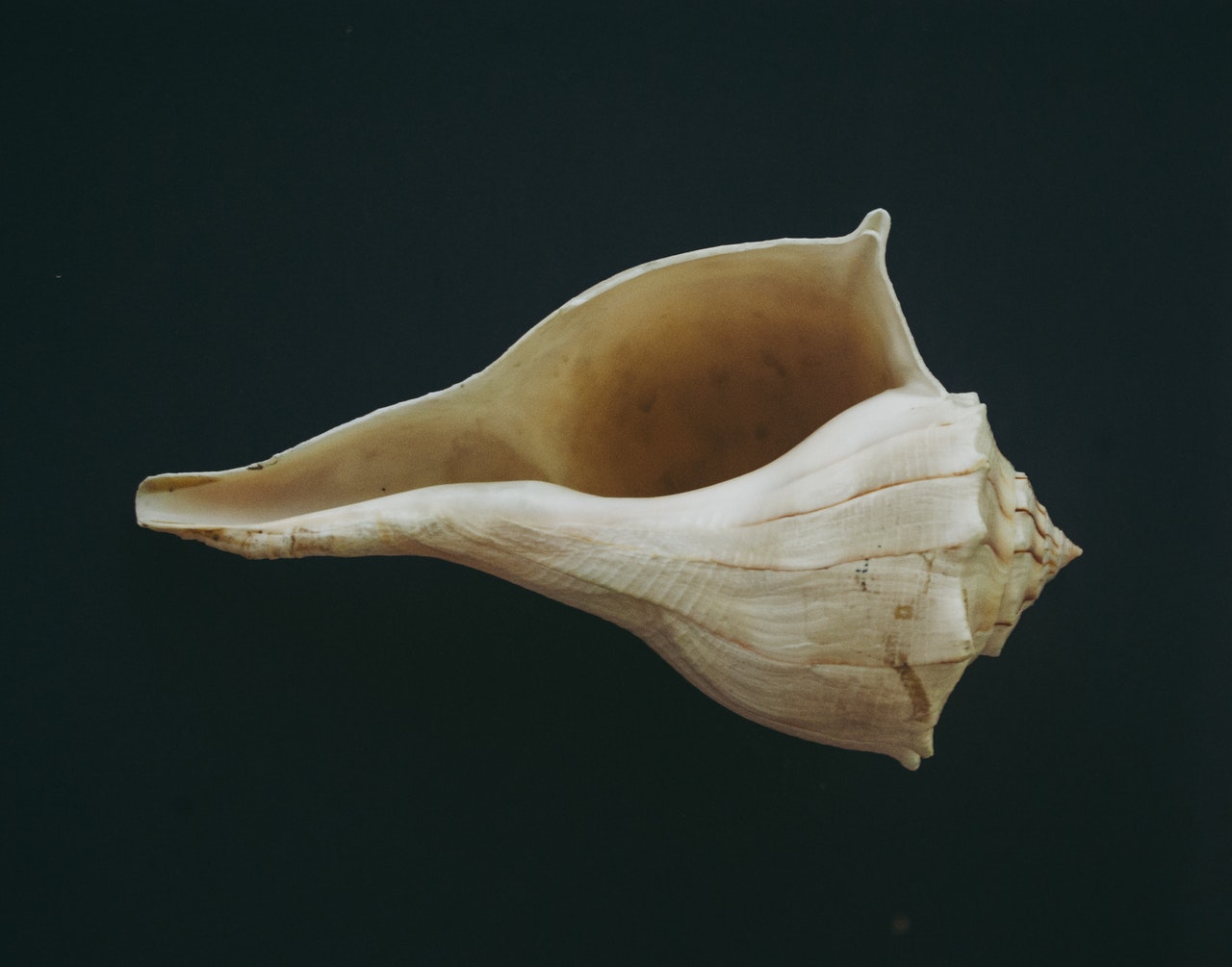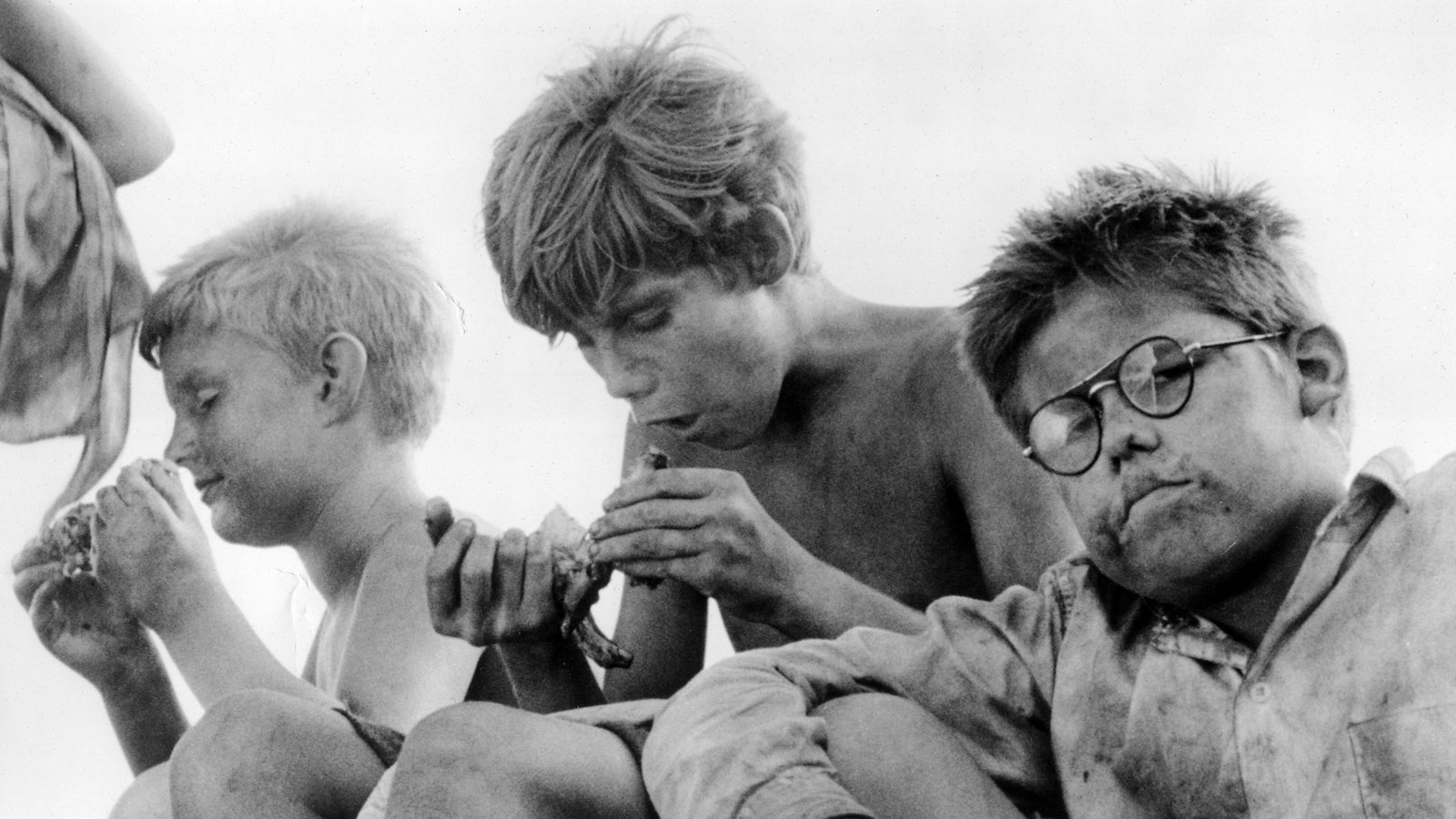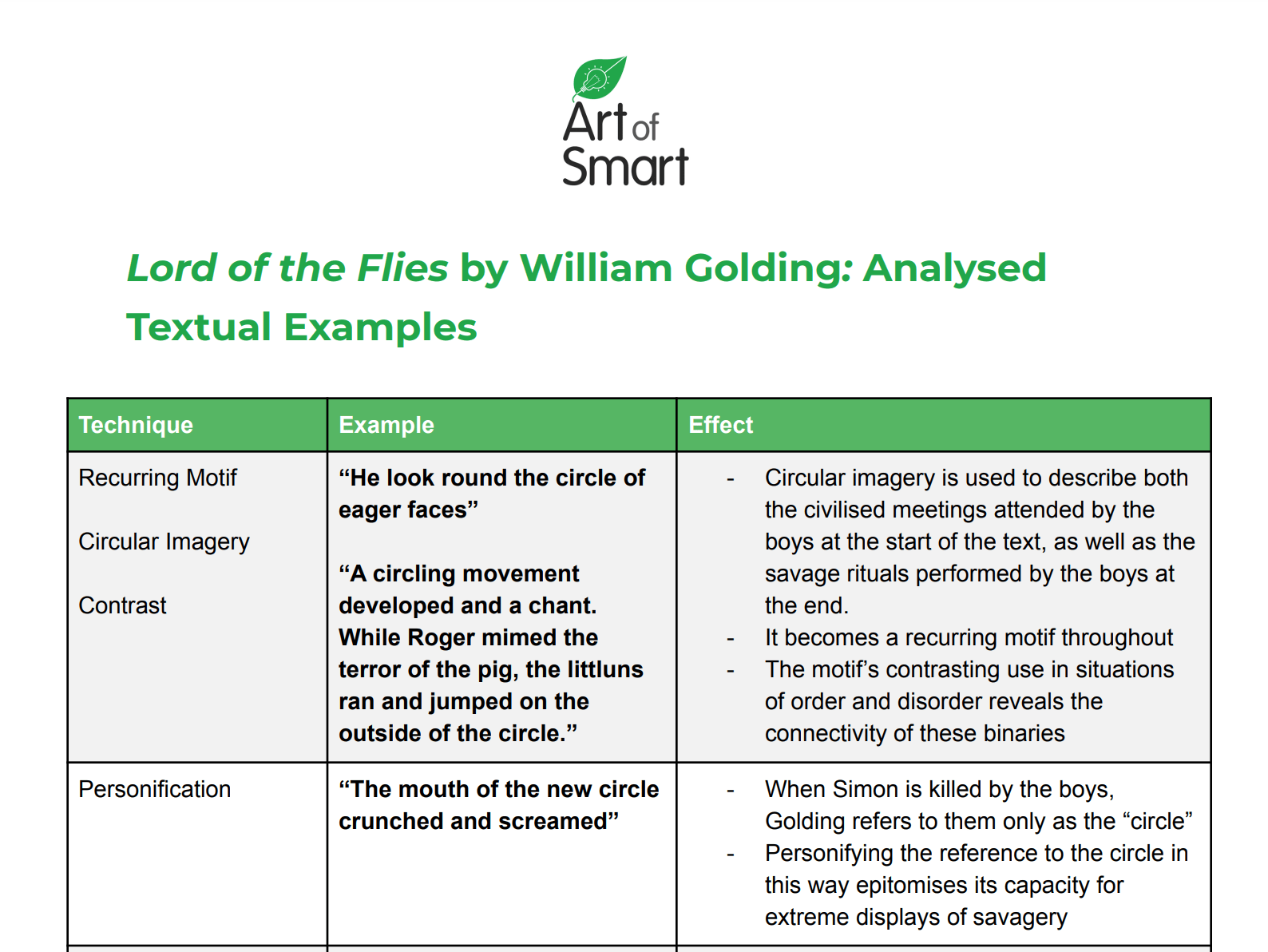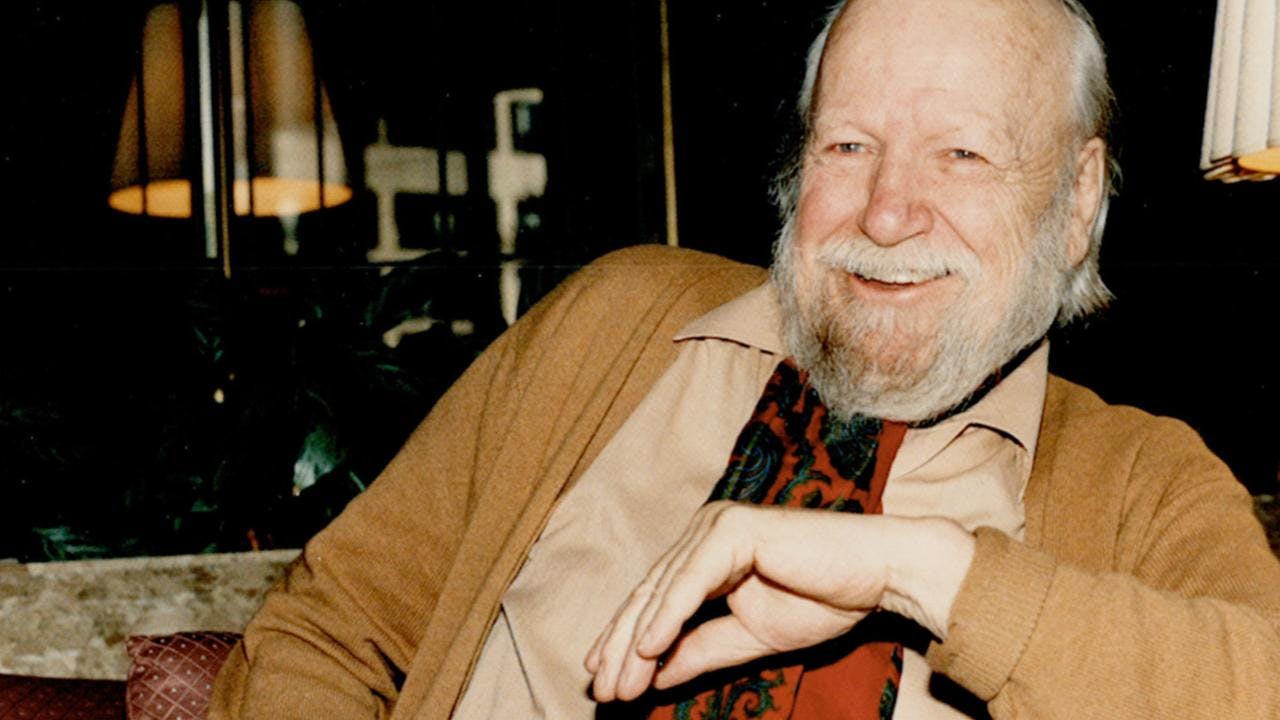Are you staring down the barrel of your senior year with ‘Lord of the Flies’ on your English reading list? Well, we’re here to help you with your analysis, as we’ll go through a summary of Lord of the Flies, key characters, context, themes and techniques!
We’ll even guide you through structuring your analysis so you can work your way towards an A!
Sound useful? We thought so.
Let’s jump in!
Lord of the Flies Summary
Key Characters in Lord of the Flies
Context
Themes Explored in Lord of the Flies
Analysis of Lord of the Flies
Summary of Lord of the Flies
‘Lord of the Flies’ is a novel by William Golding about a group of school boys who get stranded on an island by themselves after their plane crashes. The novel tracks the boys’ experiences as they try to navigate life on the island without adult supervision.
At the start of the book, a young, fair-haired boy named Ralph and an overweight, asthmatic boy with the nickname Piggy, find a conch which they use to gather the rest of the survivors. The boys hold a meeting and Ralph is voted chief of the island, tasked with the job of maintaining order and figuring out what they should do.
He allows an older boy named Jack to be the leader of a small group of hunters and decides that they must keep a fire burning on the island’s mountain top, as a way to signal to passing ships that they are stranded.
Image sourced from The New York Times
The boys set about making the fire using Piggy’s spectacles, building huts on the shoreline and gathering food. Eventually, they lose interest in these tasks, focussing more on having fun than ensuring their own survival.
The hunters become too enthralled in the excitement of hunting and let the signal fire burn out, just as a ship passes on the horizon. Ralph is furious.
He calls another meeting in an attempt to restore order, but paranoia has started festering amongst the group. The younger boys are troubled by nightmares and are scared that a beast lives on the island.
Here’s a preview of the downloadable analysed examples:
Access Lord of the Flies Downloadable Sample Paragraph and Examples of Analysis here!
Beyond the island, a war is raging. One night, unnoticed by the boys, military planes fly overhead.
A deceased parachutist lands on the mountain, becoming trapped in the rocks. The boys sleeping on the mountain wake to see a strange silhouette and believe it to be the beast. Terrified, they report back to the others.
Tensions continue to rise amongst the boys and in a meeting ordered to discuss the beast, Jack lashes out at Ralph. Jack thinks that Ralph is unfit to lead and refuses to listen to him anymore.
He starts his own tribe on the other side of the island and most of the older boys join him. Jack’s tribe begin to paint their faces and make sacrifices to the beast by placing the decapitated head of a sow on a stake.
One night, Simon, a quieter older boy, climbs the mountain and sees the dead parachutist. He runs down to tell the boys what he has seen, but he stumbles upon them in the midst of a savage dance. The boys see Simon’s shadowy figure and attack him, killing Simon with their bare hands.
Following this, Jack’s tribe succeeds in stealing the fire-making spectacles. When Piggy and Ralph confront Jack about this, an older boy pushes a boulder, killing Piggy and breaking the conch.
Ralph is warned that now Piggy is dead, Jack intends to hunt and behead Ralph like a pig. The next morning Jack’s tribe chases Ralph around the island, eventually setting fire to the forest to coax him out.
In his final attempt to flee, Ralph sprints to the shoreline, where he runs into a naval officer. The man explains that his ship saw the fire and came over to investigate. Ralph and the boys begin to cry.
Key Characters in Lord of the Flies
Ralph
Ralph is the text’s protagonist. At the start of the book he is nominated as chief of the island because of his pragmatic thinking and natural leadership skills.
In the beginning the boys listen to him, however his influence slowly fades as the group becomes more interested in having fun than acting in an orderly and civilised way.
Piggy
Piggy is an overweight, asthmatic, spectacle-wearing boy who is Ralph’s closest friend on the island. He is often subjected to ridicule from the other boys over his appearance.
Piggy is talkative, smart and someone who helps Ralph come up with many of his survival ideas on the island.
Jack
Jack is the text’s main antagonist. As head boy of the choir, he has particular pull with the older boys and rivals Ralph for authority on the island. Jack is quick-tempered and addicted to power.
Throughout the novel he obsesses over hunting pigs, enjoying dominating over nature. Jack becomes leader of the hunters, establishing a militant tribe on the island who partake in displays of savagery.
Simon
Simon is viewed as strange by the others. He is quiet and self-reflective, preferring to spend time alone with his thoughts in the jungle.
He is the only one brave enough to face the “beast” on the mountaintop, which he learns is nothing more than a dead parachuter caught in the rocks. As he goes to tell the others what he learnt, Simon is killed by Jack and his hunters in a tribal ritual that gets out of control.
Context
William Golding first came up with the idea for ‘Lord of the Flies’ after growing tired of reading novels which inaccurately described the behaviour of children when stranded without adult supervision. As a result, he went about writing a text which explored this through a realistic perspective.
Image sourced from Biography
Despite having a strong interest in novels as a child, Golding’s parents pushed him to study natural sciences. He did this for a year at university before switching to an English Literature major.
In 1940, Golding fought in World War II as commander of a rocket-launcher with the Royal Navy. After this experience he returned to teaching and began writing books.
Here’s a preview of the downloadable analysed examples:
Access Lord of the Flies Downloadable Sample Paragraph and Examples of Analysis here!
Themes Explored in Lord of the Flies
William Golding uses this novel to unpack the complexities of human nature and the dichotomy between civilisation and savagery. These binaries are at the heart of the text’s messaging and from these themes, several others appear:
Civilisation VS savagery
‘Lord of the Flies’ is essentially one big analogy for humanity’s capacity for savagery and civility. The text tracks the boys’ descent from order to disorder, commenting on humanity’s inevitable fluctuation between the two binaries.
Maturation VS innocence
Throughout the text, readers observe the boys undergo a loss of innocence. Life on the island poses various challenges and the boys are forced to mature quickly in the face of life-or-death situations.
However, this maturation is constantly undercut by reminders of their youth and innocence, with an example being their collective fear of an imaginary monster inhabiting the island.
Quotes
“Apart from food and sleep, they found time for play, aimless and trivial, in the white sand by the bright water. They cried for their mothers much less often than might have been expected; they were very brown, and filthily dirty.”
“A semicircle of little boys, their bodies streaked with colored clay, sharp sticks in their hands, were standing on the beach making no noise at all.”
“And in the middle of them, with filthy body, matted hair, and unwiped nose, Ralph wept for the end of innocence, the darkness of man’s heart, and the fall through the air of the true, wise friend called Piggy.”
The secret to writing a strong essay response is familiarising yourself with these concepts and becoming an expert at knowing how and why the text conveys these.
How to Analyse Lord of the Flies in 3 Steps
Often students will try to start with their thesis when trying to answer an essay question. Instead, start with your analysis! You need to equip yourself with the knowledge of your text before you can answer anything about it.
After you’ve analysed your text, you can draw ideas from it, then you can build your thesis!
We’re going to walk you through creating an analysis for ‘Lord of the Flies’ in three simple steps!
Step 1: Choose your example
The best way to choose an example is to find a technique. The technique is the key to finding greater meaning in a text, which you will need in your analysis.
We have chosen to look at two quotes from the text:
“He look round the circle of eager faces”
and
“A circling movement developed and a chant. While Roger mimed the terror of the pig, the littluns ran and jumped on the outside of the circle.”
Step 2: Identify your technique(s)
When hunting for techniques, don’t become obsessed with trying to find the fanciest or most niche one possible. Adversely, don’t go choosing random ones just for the sake of it.
Strong responses feature techniques that help to explain your thesis or idea. The techniques chosen should assist in building your argument to make it as compelling and interesting as possible.
A quick tip: try to focus on finding examples with techniques that uncover deeper meaning. For example, keep an eye out for any metaphors, similes, figurative language, connotations, symbolism, and recurring motifs!
We have identified 3 techniques in the two quotes above: recurring motif, contrast, and imagery.
If possible, try to find examples with multiple techniques. This will make your essay analysis more in-depth and considered. It also shows markers you’ve made careful choices about which quotes to use.
Step 3: Write the analysis
When it comes to writing the actual analysis, remember to focus on what the effect of the technique is. Always avoid technique labelling! Below is an example of what NOT to do:
Circular imagery is used throughout the text in the description of the boys’ first meeting on the island, a “circle of eager faces”. This quote also includes reference to a circle, which is a recurring motif in the text, as seen in later descriptions of the hunters, “a circling movement developed and a chant”. The contrast between these two instances epitomises the difference between civilisation and savagery.
The analysis of an essay should unpack an idea by delving into exactly what the techniques are doing and why it is important. If we do this, our analysis will look something like this:
Golding uses circular imagery throughout the text as a way to highlight the connectivity between civilisation, savagery and the inevitable movement between the two extremes. At the start of the text, the boys partake in civilised meetings where they are described as a “circle of eager faces”. As the story develops and primal urges begin to take over, this image of the circle is used again to describe the hunting ritual: “While Roger mimed the terror of the pig, the littluns ran and jumped on the outside of the circle”. The contrasting use of this motif explores the reality that movement between savagery and civilisation is cyclical, with humanity forever cycling through periods of stability and violence.
Here’s a preview of the downloadable analysed examples:
Access Lord of the Flies Downloadable Sample Paragraph and Examples of Analysis here!
There you have it!
We’ve taken you through the essential aspects of crafting an analysis for Lord of the Flies with our summary, explanation of the context, descriptions of the key characters and themes! Good luck with writing up your essay!
Need some help analysing other texts?
Check out other texts we’ve created guides for below:
- Romeo and Juliet
- Frankenstein
- Hamlet
- Rainbow’s End
- Jane Eyre
- In Cold Blood
- Persepolis
- Amélie
- The Book Thief
- The Tempest
- Blade Runner
- 1984
- Fahrenheit 451
Are you looking for some extra help with your Lord of the Flies analysis?
We have an incredible team of QCE tutors and mentors!
We can help you master your analysis of Lord of the Flies by taking you through the summary, key characters and themes. We’ll also help you ace your upcoming English assessments with personalised lessons conducted one-on-one in your home or online!
We’ve supported over 8,000 students over the last 11 years, and on average our students score mark improvements of over 20%!
To find out more and get started with an inspirational QCE tutor and mentor, get in touch today or give us a ring on 1300 267 888!
Jessica Arentz is a Content Writer at Art of Smart and an undergraduate student at the University of Sydney where she studies a Bachelor of Arts/Advanced Studies (Media and Communications) (Marketing). She currently volunteers at 2SER community radio station as a producer and newsroom reader. When not writing, you can find Jess searching the web for cheap flights or spending her days with her head buried deep in a book.







